Thermo Fisher Scientific FLTB Operating instructions
- Type
- Operating instructions

HLA-FLT B Tray
Instructions for Use

1
For In Vitro Diagnostic Use
HLA-FLT B Tray
Instructions for Use
For In Vitro Diagnostic Use
The presence of HLA antibodies can be detected by using a panel of well characterized
lymphocytes in the microlymphocytotoxicity assay. The panel should be representative of the
most common HLA antigens for the detection of sensitization and the possible further
characterization of these antibodies.
Invitrogen™ Frozen B Lymphocyte Panel is for use in the microlymphocytotoxicity assay for the
detection and identification of Class II antibodies. Lymphocytes characterized for most of the
WHO recognized HLA antigens are included. Invitrogen™ FLT B Tray contains 2 tests per tray
and is designed for the screening of two sera. Each identical panel consists of 26 test wells. Each
well of the tray contains 2 µl of a specific lymphocyte preparation (6000 to 8000 mixed B
lymphocytes/well) suspended in a freezing media of fetal calf serum and dimethyl sulfoxide in
RPMI-1640, overlaid with two to five microliters of mineral oil to prevent evaporation during
freezing. Four wells/test are reserved for the addition of positive and negative control sera. Cells
in these wells are random duplicates of the panel and are designed to determine that the
cytotoxicity assay is working, showing proper performance of the complement and expected
results from designated incubation times.
CAUTION: HANDLE AS IF CAPABLE OF TRANSMITTING INFECTIOUS DISEASE
Human Lymphocytes from which this product was derived was tested and found to be non-
reactive for Hepatitis B surface antigen (HBsAG) and Anti-HTLV-III as required by the FDA and by
FDA approved methods of assay. However, no known test method offers complete assurance
that human blood derived products will not transmit these diseases.
In this manual:
Section Description Page
1. Kit Components 2
2. Material, Reagents, and Equipment not Supplied 2
3. Sample Requirements 2
4. Microlymphocytotoxicity Test Procedure 3
5. Interpretation 4
6. Performance Standards 4
7. Troubleshooting 4
8. Limitations and Precautions 5

2
For In Vitro Diagnostic Use
1 Kit Components:
Description Quantity Storage
1.1 60 well cell tray contains 2 µl of a
specific lymphocyte preparation
(6000 to 8000 B
lymphocytes/well) suspended in a
freezing media of fetal calf serum
and dimethyl sulfoxide in RPMI-
1640, overlayed with 2-5 µl
mineral oil
4 -55° C or colder in a
NON-FROST FREE
FREEZER
1.2 Certificate of Analysis 1 ----------
1.3 Worksheet 4 ----------
2 Material, Reagents, and Equipment not Supplied:
2.1 Dry vacutainer tube, Becton Dickinson & Co.
2.2 Centrifuge with a swinging bucket rotor, Beckman Instruments
2.3 Centrifuge, swinging bucket rotor, histoplate carriers - IEC Centra 7, Damon/IEC
2.4 Pasteur pipets, Curtin Matheson Scientific
2.5 1 ml plastic cryotubes or equivalent, Cryo Med
2.6 Microsyringes – 50 µl, 100 µl, 250 µl, Matrix
2.7 Phase contrast microscope 150x, Nikon TMS or equivalent
2.8 Glass coverslide
2.9 Mineral Oil – Penreco, Drakeol® 10LT MIN OIL NF
2.10 Eosin Y - Solution 5%
2.11 12-37% Neutralized Formalin - pH 7.0 ±0.2
2.12 RPMI-1640
2.13 Pooled Human Serum (Heat Inactivated) –Invitrogen™ product code 34005100. Or
Fetal Calf Serum (Heat Inactivated) - Sigma Chemical Co.
NOTE: It is recommended that FCS be tested for cytotoxic activity against
separated B cells prior to use.
2.14 Positive and negative control sera –Invitrogen™ product code 1145005 and 3400005
3 Sample Requirements:
3.1 Using accepted medical procedure, collect whole blood without anticoagulant and
allow blood samples to clot.

3
For In Vitro Diagnostic Use
3.2 Centrifuge clotted blood at 2000 rpm for 10 minutes.
3.3 Remove serum and place in clean labeled vials.
3.4 If antibody screening is to be performed using Microlymphocytotoxicity Test
Procedure, prepare appropriate dilution(s) using RPMI-1640 containing 20% heat
inactivated pooled human serum or heat inactivated fetal calf serum.
3.5 If screening is to be delayed, freeze undiluted serum and store at -55°C or colder.
.
4 Microlymphocytotoxicity Test Procedure:
The microlymphocytotoxicity assay uses lymphocytes as the target. This serologic assay
measures cell death by the activation of complement (rabbit) in the presence of specific
antigen-antibody combinations. The antibody-antigen complement reaction is measured
by viewing the test microscopically at 150x magnification with phase contrast illumination
using a vital stain such as Eosin Y or Trypan Blue. Dead cells will absorb the dye and
exhibit appropriate color change. Negative cells remain viable, exclude the dye and do not
exhibit any distinct nuclear detail.
4.1 Thaw serum samples, if necessary, and prepare appropriate dilutions.
4.2 Remove Invitrogen™ FLT B Trays from freezer and allow to begin thawing slightly.
Complete the thawing process by adding 5µl prewarmed (37°C) wash medium
(RPMI-1640 containing 10% fetal calf serum) to each well.
NOTE: Pooled human serum may be substituted for fetal calf serum.
4.3 Centrifuge trays at 1000 rpm for 60 seconds. Flick or aspirate the supernatant to
remove.
4.4 Gently dispense 2 to 5 µl of mineral oil into each well to cover the cells.
4.5 Using an appropriate microsyringe, add 2 µl of undiluted test serum or serum
dilution(s) to the top of each test well on the tray, being careful not to touch the
cells. In addition, negative control serum and positive control serum should be
added to the appropriate wells.
Two Test Tray: Negative control in wells 1A, 1B, 6F, 6E
Positive control in wells 5E, 5F, 10B, 10A
4.6 Incubate the trays for 60 minutes at room temperature. (22°C±3°).
4.7 Using a 250 µl syringe, add 5 µl of rabbit complement to the wells, being careful not
to touch the serum-lymphocyte mixture with the syringe tips.
4.8 Incubate the trays for 120 minutes at room temperature (22°C±3°).
4.9 Using a 50 µl or 100 µl syringe, add 2 µl of filtered 5% aqueous Eosin Y to each well
and incubate at room temperature (22°C±3°) for 3 to 5 minutes. Be careful not to
touch the antisera/lymphocyte mixture with the syringe tips.
4.10 Using a 50 µl or 250 µl syringe, add 5 µl of filtered 37% neutralized formalin to each
well.

4
For In Vitro Diagnostic Use
4.11 Place a 2x3 inch coverslide over the tray and allow plates to stand at room
temperature for at least 30 minutes before reading the reactions. Observe the test
microscopically at 150x magnification using phase contrast illumination. It is
recommended that the test be read within 48 hours.
5 Interpretation:
5.1 Dead cells (those possessing the antigens) absorb the dye and appear enlarged and
darkened. Viable cells (those lacking the antigens) exclude the dye, appear brighter
and smaller in size as compared to dead cells.
5.2 After correcting for percent dead cells in negative control wells, the test is graded as
follows:
% Dead Cells Score Interpretation
0-10 1 Negative
11-20 2 Doubtful negative
21-50 4 Weak positive
51-80 6 Positive
81-100 8 Strong positive
------ 0 Not readable
5.3 Identify antibodies using the standard antigram. Examine reaction pattern for
positive reactions in cells that may have antigens in common. This will aid in
distinguishing the specificities when recording test results.
6 Performance Standards:
6.1 Invitrogen™ Frozen B Lymphocyte Panel has been extensively tested.
6.2 The cells in each well have a minimum viability of 80%, with most wells exhibiting
viabilities greater than 95%.
6.3 When using proper positive and negative control sera (such as manufactured by
Invitrogen Corporation) the positive control wells will exhibit a 6-8 score and the
negative control wells will exhibit a 1-2 score. These control wells are provided on
each tray for testing complement activity and correct incubations, and not for
determining cell viability.
6.4 Each lot of trays produced must meet a minimum standard by exhibiting acceptable
performance against eleven known HLA antisera.
7 Troubleshooting:
7.1 Overall poor lymphocyte viability could be contributed to:
7.1.1 Room temperature is in excess of 26°C. Adjust room temperature to 22°C±3°.
7.1.2 Failure to completely remove dimethyl sulfoxide (DMSO) from trays. Make
sure all supernatant is removed before adding mineral oil to the wells.
7.2 Low lymphocyte count in the well could be contributed to:

5
For In Vitro Diagnostic Use
7.2.1 Flicking tray with too much force or over-aspirating tray.
7.3 Overall weak reactions may be contributed to:
7.3.1 Room temperature is below 18°C. Adjust room temperature to 22°C±3°.
7.3.2 The complement used has low activity.
8 Limitations and Precautions:
8.1 Cells on the Frozen B Lymphocyte Panel are selected to represent most of the HLA
antigens. However, because of the small panel size, antibody identifications against
rarer groups are limited. Confirmation is recommended on a different panel.
8.2 Rabbit complement is a critical reagent in the lymphocytotoxicity test procedure.
Complement provided with the Invitrogen™ HLA-FLT Trays must be used undiluted
in this procedure.
8.3 Invitrogen™ HLA-ABC and DR complements have been tested to meet performance
criteria and exhibit <5% background toxicity (see catalog and/or complement
package insert.) However, it is advisable that samples of each new lot of
complement be tested in parallel with a known acceptable lot. A suitable rabbit
complement should exhibit an 8 score with the positive control and most of the
expected positive wells. It should exhibit a 1 score with the negative control and
most of the expected negative wells.
8.4 Exposure to CO2 should be avoided because of possible pH changes which may be
anti-complementary.
8.5 Mineral Oil - It has been reported that some brands of mineral oil may be inhibitory
in this assay. The brand listed in Section 2.9 of this instruction gives satisfactory
results. Any other brands should be tested prior to use.
8.6 Avoid excessive freeze-thaw cycles of serum samples as this may weaken antibody
potency, possibly resulting in false negative reactions.
8.7 Serum should never be prediluted and then frozen. It is recommended that all
dilutions be discarded at the end of the work day.
8.8 Screening with plasma must be avoided because:
8.8.1 The amount of anticoagulant may act as a diluent which weakens the
potential antibody and may possibly cause false negative results.
8.8.2 Some anticoagulants, such as EDTA, inhibit the activation of complement,
thereby causing false negative reactions.
8.9 It is recommended that pooled human serum or fetal calf serum used with Class II
assays be prescreened for cytotoxic activity against separated B cells prior to use.

6
For In Vitro Diagnostic Use
References:
1. Dausset, J.: ISO-LEUCO Anti Corps. ACTA Haematol, 20, p. 156, 1958
2. Walford, R.L., Galligher, R., Sjaarda, J.R. (1964), Serologic Typing of Human Lymphocytes
with Immune Serum Obtained After Homografting, Science, 144, p. 868, 1964
3. Cannady, W.G., Reckel, R.P., Tripodi, D., Shaws, S., Boldassari, D., and Metz, L.:
Sensitivity of Various HLA Typing Techniques. Tissue Antigens No. 6, 4, p. 564, 1970
4. DeWolf, W.C., Cannady, W.G. and Yunis, E.J.: The Major Histocompatibility Complex in
Henry J.B. (ed): Clinical Diagnosis and Management by Laboratory Methods, Vol. 2, W.B.
Saunders & Co., New York, 1978, p. 1353
5. Cannady, W.G., DeWolf, W.C., Williams, R.M., and Yunis, E.J.: Laboratory Methods in
Transplantation Immunity, in Stefanini M. (ed) Progress in Clinical Pathology. Grune and
Stratton, Inc. New York, 1978, p. 239
6. Albert, E.D., Baur, M.P., and Mayr, W.R., (eds) Histocompatibility Testing 1984. Springer-
Verlang, Inc., New York, 1984
7. Ruder, H., Opelz G., Lenhard, V., Shafer, A. and Daviel, V.: A Rapid Screening Technique
for Lymphocytotoxic Antibodies Using Tray-Frozen Lymphocytes. Cryobioloby, 21, No. 5, p.
480, 1984
PR008
Revision 03
Print 9/06

For country-specific contact information visit our website at
www.invitrogen.com
Invitrogen Corporation
9099 N. Deerbrook Trail
Brown Deer, WI 53223 USA
Tel. 1-800-955-6288
Fax 1-800-331-2286
Email: [email protected]
-
 1
1
-
 2
2
-
 3
3
-
 4
4
-
 5
5
-
 6
6
-
 7
7
-
 8
8
Thermo Fisher Scientific FLTB Operating instructions
- Type
- Operating instructions
Ask a question and I''ll find the answer in the document
Finding information in a document is now easier with AI
Related papers
-
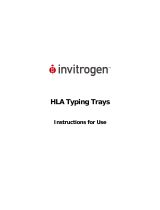 Thermo Fisher Scientific HLA Typing Trays Operating instructions
Thermo Fisher Scientific HLA Typing Trays Operating instructions
-
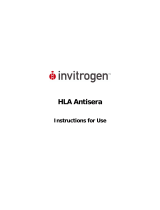 Thermo Fisher Scientific HLA Antisera Operating instructions
Thermo Fisher Scientific HLA Antisera Operating instructions
-
 Thermo Fisher Scientific Antibody Analysis Program Operating instructions
Thermo Fisher Scientific Antibody Analysis Program Operating instructions
-
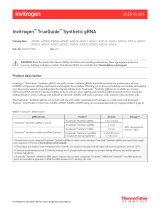 Thermo Fisher Scientific TRUE User guide
Thermo Fisher Scientific TRUE User guide
-
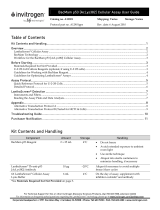 Thermo Fisher Scientific BacMam p53 User guide
Thermo Fisher Scientific BacMam p53 User guide
-
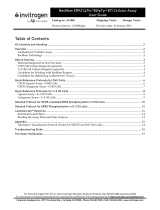 Thermo Fisher Scientific BacMam ERK2 User guide
Thermo Fisher Scientific BacMam ERK2 User guide
-
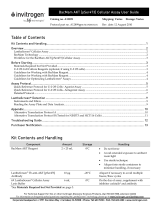 Thermo Fisher Scientific BacMam AKT User guide
Thermo Fisher Scientific BacMam AKT User guide
-
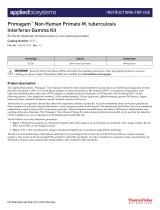 Thermo Fisher Scientific Primagam Non‑Human Primate M. tuberculosis Interferon‑Gamma Kit Operating instructions
Thermo Fisher Scientific Primagam Non‑Human Primate M. tuberculosis Interferon‑Gamma Kit Operating instructions
-
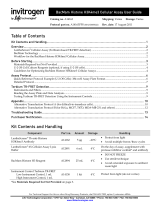 Thermo Fisher Scientific BacMam Histone H3K4me3 Cellular Assay User guide
Thermo Fisher Scientific BacMam Histone H3K4me3 Cellular Assay User guide
-
 Thermo Fisher Scientific Richard-Allan Scientific 10% Neutral Buffered Formalin Operating instructions
Thermo Fisher Scientific Richard-Allan Scientific 10% Neutral Buffered Formalin Operating instructions
Other documents
-
Abbott Alinity s User manual
-
IDS IS- ID6502 User manual
-
Fox Food Xplorer User manual
-
Siemens COV2T SARS-CoV-2 Total Antibody Assay User manual
-
 RightSign COVID-19 IgG/IgM Rapid Test Cassette User manual
RightSign COVID-19 IgG/IgM Rapid Test Cassette User manual
-
Artron COVID-19 IgM/IgG Antibody Test User manual
-
Hitachi OPTIGEN AP3600 User manual
-
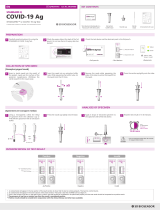 SD Biosensor Standard Q COVID-19 Ag Test Operating instructions
SD Biosensor Standard Q COVID-19 Ag Test Operating instructions
-
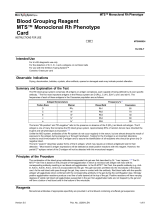 MTS 80024 Blood Grouping Reagent Monoclonal Rh Phenotype Card User manual
MTS 80024 Blood Grouping Reagent Monoclonal Rh Phenotype Card User manual
-
GP Getein1100 Anti-HIV Fast Test Kit (Immunofluorescence Assay) User manual




















